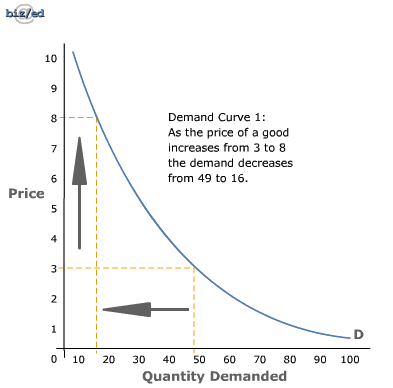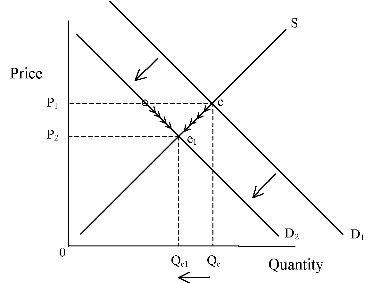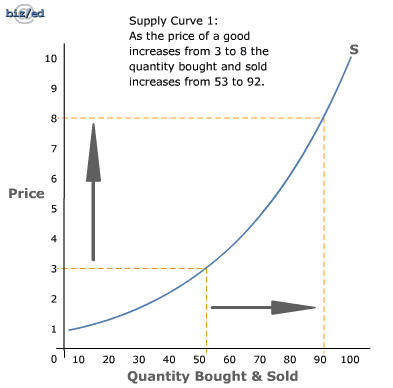Introduction
Tertiary education is the third largest foreign exchange earner in Australia from iron and coal; in 2009/2010 financial budget, the value of Australian tertiary education revenue contribution amounted to $9.1 billion which was an increase of 10.2% of the earnings recorded in 2008/2009 financial year.
With the statistics, it’s true to say that the demand of the country’s education is growing; other than growth in demand, the supply is also on an upward rise(Smart, 2004). This paper analyzes the factors that influence the tertiary education market in Australia; it will consider the demand and supply side of the market.
Factors affecting demand of the countries education
According to Australian Bureau of Statistics, 2010 the demand for tertiary education in Australia rose by 10.2% in the year of income of 2009/2010; during the period other than foreign students the sector records approximately 6.5 million domestic students per year. The demand of the countries education system can be attributed to:
Enabling education environment
The Australian government has ensured that there is good environment for tertiary education to both domestic s and national students.
The environments are created with continued investments in research and development to ensure that the quality and structure of the education in the country meets international standards; in 2004-2004, the country used $4.3 billion (27 per cent of the nation’s R&D effort) on tertiary education research and development (McTaggart, Findlay and Parkin, 2010).
Globalization
Globalization and increased awareness among different countries is working to the benefit of Australian education system; there are an increasing number of international students whose access to the education has been facilitated by ease in access, ease in visa application, flexibility of the education system and quality of the countries education system.
Improved quality of education
The quality of education in Australia has continued to improve and there has been production of market oriented graduates; with the quality, people from different parts of the globe are seeing the system and quality and good for them thus its demand increases (Hubbard, 2009).
The chart below shows the effect of the above factors on a demand curve:

The new market equilibrium
Demand and supply of the education system in Australia is self regulating as the economy is market oriented (capitalistic market); when equilibrium has been reached, then the economy is able to have the standard rate at which the price and quality of the education will be offered. The Australian education system for instant has evolved of late to cater for increased foreign students.
With prestigious universities offering international courses, Australia attracts many students from the aforementioned countries who come with their social lifestyles and influence the local students to adopt their traits. The media is another tool of education that has developed with globalization; it has led to better informed students and scholars.
Traditional “chalk” education system has been replaced by computer-based education. There is a great access to technology; teachers and students are increasingly using the internet and computers in their studies. This has been facilitated by globalization that has facilitated technological adoption (Jackson and McIver, 2011).
The following diagram shows an equilibrium level of Australian education:

Factors affecting supply of the country’s education
The supply of tertiary education in the Australian market can be attributed to a number of factors; the following are the main factors that influence the supply in the sector of the economy:
Growth of private institutions
Since the 1990’s the Australian education systems has started to generate and attract private investors and moved from reliance on government funding and sponsorship.
When Higher Education Contribution Scheme (HECS) was introduced in 1989 to offer funding to both private and public tertiary education schools, then it created a market for private sectors to provide the education. Currently the country enjoys about 150 private institutions where they get grants and funding to the tune of over 50% of the set amount.
Technological development
With technological development in the sector, the government and tertiary education sector has been able to prove e-learning and distance learning services; the services have assisted the sector to have an increased number of participants.
Operating margin
The operating margin of tertiary education institutions in Australia is low; according to Australian Bureau of Statistics, 2010 the operating margin in the sector of the economy is as low as 4% which meant that some institutions had to operate under a deficit.
The chart below shows the effect of above parameters on supply:

Intervention in the market
With the growth of tertiary education, there are some externalities that the economy of Australia is getting; externalities are either positive or negative.
Positive externalities
With the growth of the sector, the country is getting an influx of international students who have different talents and skills. When the students as well as tutors get to the country, there are changes in social, economic, and cultural dimensions of the country. When people of different cultures live together, there is culture diffusion and transfer. With such multicultural chances of civil rivalry are lower.
An increase in tertiary education means that talents and skills will be natured and used for the good of the economy; when an economy has an engine of educated minds, then it’s likely to grow faster and efficiency enhanced.
When in school, students are sources of informal and low cadre jobs labor; as students look for live hood some engage in low paying jobs, when engaging in low paying jobs the economy benefits low labor thus different industries can take the advantage for their own economic and profit growth.
Students are consumers of different commodities; with this there have been other complimentary industries that have grown because of the education structure. It is common to find some towns and companies operating in the neighborhood of tertiary education institutes. This has created jobs and improved the country’s economy.
Negative externalities
Global financial crisis of 2007 has made life challenging to people in different parts of the globe; in the same light, the crisis has made life unbearable to some tertiary level students making them to look for socially unacceptable way of earning a living like prostitution. Prostitution has been named as one of the major contributor to the increase in sexually transmitted diseases and AIDS.
The economy is producing an increasing number of qualified graduates from the tertiary institutions than the local market can handle; with the increase the economy has some people who cannot get a decent job thus it leads to discouragement, and loss of hope to the people. A country with educated population that is not working is challenging and at the risk of developing social rivalry (Levitt, 2005).
The presence of different colors, races and culture in the economy has created a sense of prejudices and racism; the students’ fraternity can be seen to be divided along ethnic, nationality and color races a factor that raises tension in tertiary education institutions.
The wage rate of the country has been affected by the increased number of students; students are willing to offer labor at low rated than the prevailing rates in their efforts to earn a living; this has created a reducing an instability of the wage rate.
With the high influx of students, there have been increases in illegal immigrants or people who overstay in the country without genuine and correct documentation. This has been enabled by the need to access the education system by people who are not qualified as well as some staying in search for well paying jobs (Stuart, 2000)
Government interventions
To benefit from positive externalities in the economy; the Australian government has enacted expansion policies in the economy; the policies include investments and facilitation of the growth in the sector and international advertising. When an individual has been noted to have exceptional skills and expertise that the country can benefit, the government is always willing to retain the person for the good of the economy.
To ensure that nationalism and peaceful living has been facilitated in the economy, the government has instructed that every school should have some common courses that reinforce diplomatic conflict management and enhance understanding among different ethnic groups and nationalities.
With the threat of influx of illegal immigrants, the government has computerized visa and pass port allocation system where it can monitor those people living in the economy without the legal backing (Access Economics, 2005).
Conclusion
The demand for Australian education system has been facilitated by the quality of education, responsive government policies, affordability of the education, and globalization.
Australian tertiary education system is dominated by private institutions regulated by Higher Education Contribution Scheme (HECS) to offer certificates, diplomas and degrees that are recognized internationally. The regulated system offers favorable learning environment to domestic and international students.
References
Access Economics, 2005. The Economic Benefit of Increased Participation in Education and Training. New York: Dusseldorp Skills Forum.
Hubbard, E., 2009. Microeconomics. Sydney : Pearson Education Australia.
Jackson, J. and McIver, R. ,2011. Macro Economics. Sydney: McGraw Hill.
Levitt, S. , 2005. Freakonomics: A rogue economist explores the hidden side of everything. New York: William Morrow.
McTaggart, D., Findlay, C. and Parkin, M. ,2010. Economics. Sydney: Pearson
Smart, J. ,2004. Higher Education: Handbook of Theory and Research. London: Springer.
Stuart, J., 2000. Achieving Institutional and Staff Renewal: Retrenchment, Retirement, Recruitment, Reward and Retention. Perth: University of Western Australia.